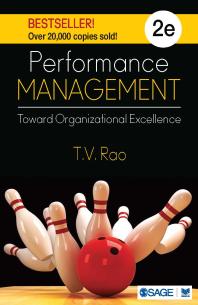Training and development refers to formal, ongoing practices within organizations to improve the performance and self-fulfillment of employees through a variety of educational methods and programs, and may take the form of everything from instruction in highly specific job skills to long-term professional development.
This guide is best used as a starting place to help you find information on training techniques, instructional design, learning, employee development, employee engagement and employee reviews. We'll connect you with a variety of information sources, including books, scholarly/research articles, news, articles, data and more that explore the many and varied aspects of training and development.
A classic resource used by trainers for designing, developing, and delivering effective and memorable training. Addresses issues such as globalization, rapidly changing technology, and a more sophisticated and diverse group of learners.
Prepares tutors for helping work-based students learn in a variety of ways at both undergraduate and postgraduate level.
Explores best practices for building interactive, fun, and effective online learning programs, as well as a discussion of technology and tools that facilitate their implementation. Covers topics such as learner interface, gamification, mobile learning, and individualization.
Presents a framework for designing effective instruction for "real-world" settings. Considers learners, objectives, setting, and more, and includes design templates.

Shifts the entire focus of performance management to performance improvement and talent management. Focuses on ways to enhance the performance of individuals, dyads, and teams for achieving organizational excellence.
Focuses on increasing employee engagement and optimizing workplace performance by harnessing the power of engagement and nurturing people's innate desire to be captivated by the activities in which they are involved.
The active training methodology turns the spotlight away from the instructor and puts the emphasis on the learner, reflecting today's business realities, emerging technologies, and the ever-evolving role of the adult educator.
Reveals the three elements that make work miserable -- irrelevance, immeasurability, and anonymity -- and gives managers and their employees the keys to make any job more engaging.
Combines recent advances in neuroscience, psychology, behavioural economics, and education with key research on high-performance businesses to create an actionable blueprint for becoming a learning organization.
Offers guidance and advice for managers looking to develop a coherent training strategy that is professionally planned and organized.
Books and other resources such as videos or reports can be a very valuable resource in the research process; they are especially useful when you are looking for:
Example searches:
Use search words and phrases that describe more general topics or categories, rather than very specific ones. Try to discover the subject terms used within the database; here are several examples:
Search for books, videos and other similar resources:
During the research process, we most often find ourselves looking for journal articles, as well as articles from other similar types of publications (aka "periodicals"). The value of journal and other articles lies in their specificity and their currency - they often explore the latest developments on a very small segment of a topic, and are best:
For more on the different types of periodicals and their value, see:
Example searches:
Use search words and phrases that are specific, rather than general; use quotation marks to define phrases. The word "AND" is optional, but is useful for clarity. Here are several examples:
Associations and other organizations often provide news, statistics, research, and other resources related to the focus of the organization. While some resources may be limited to members only, they often make some information available openly.
© , University of the Fraser Valley, 33844 King Road, Abbotsford, B.C., Canada V2S 7M8

